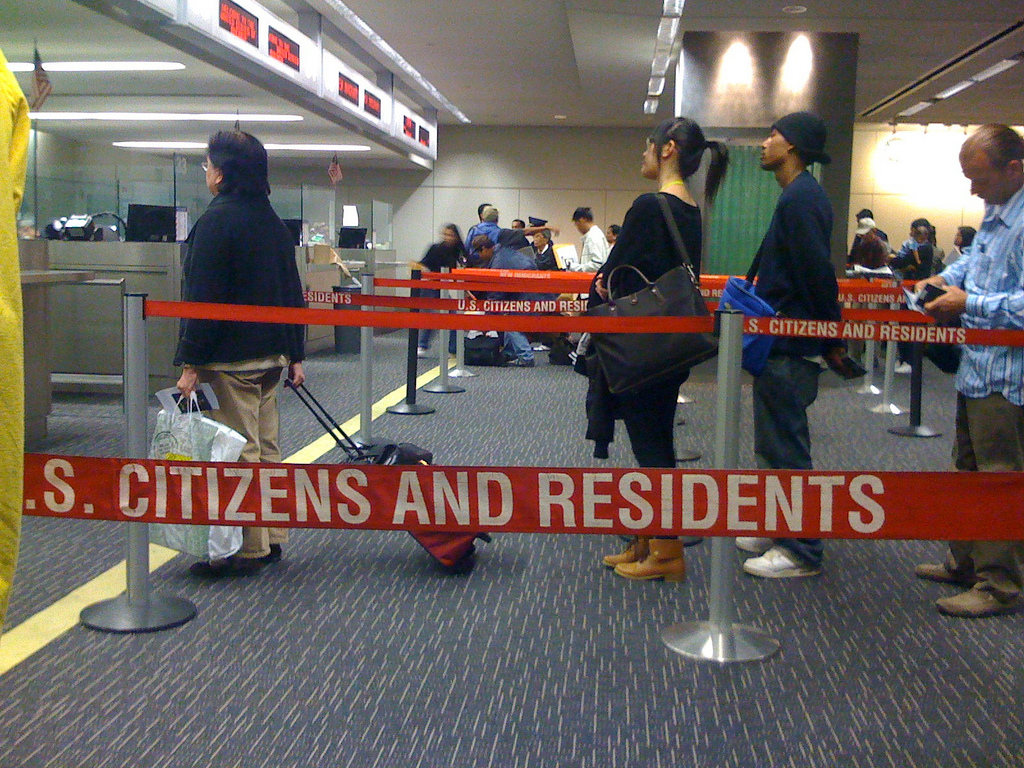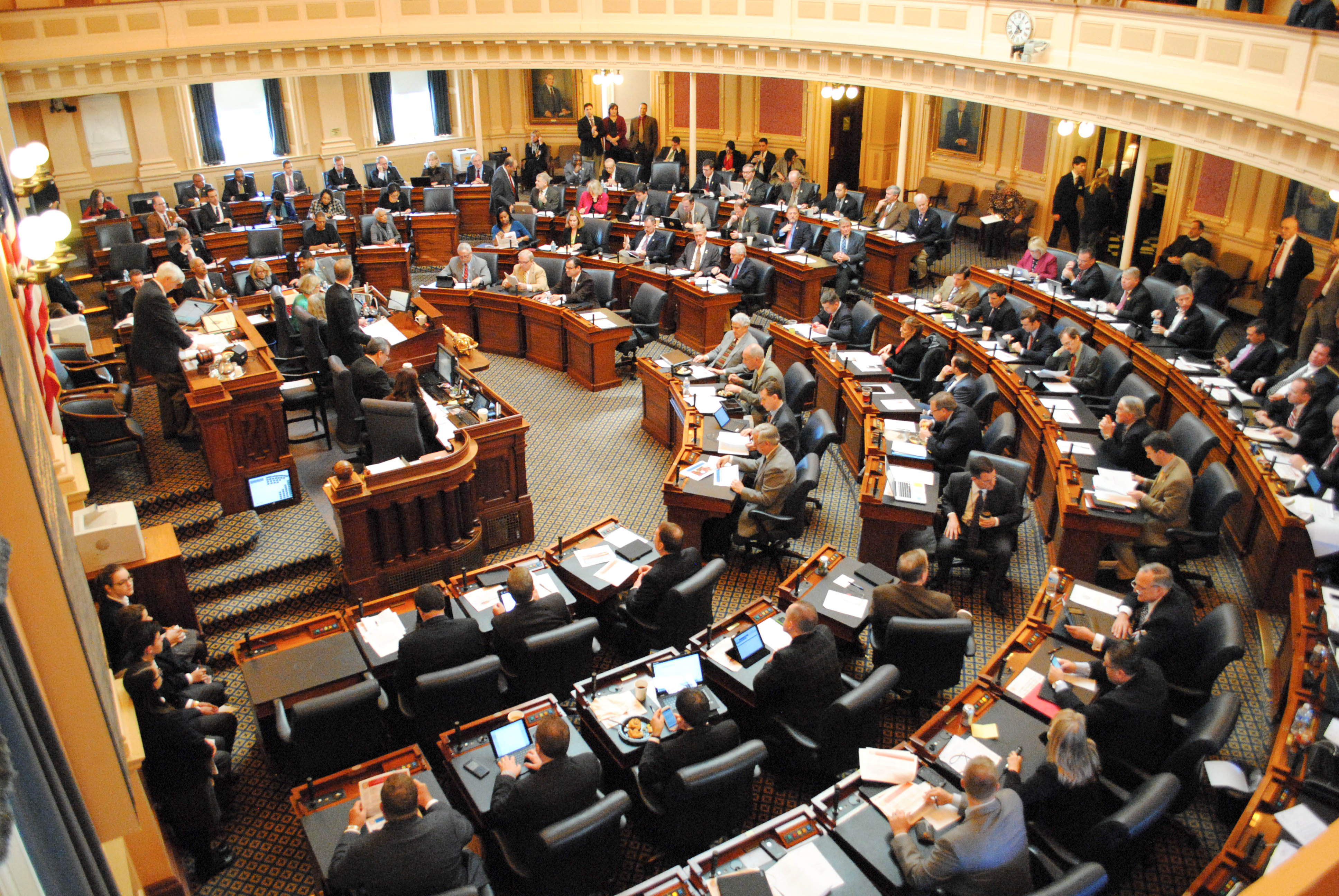With days to go until the next government shutdown, Republican leaders are reportedly seeking a six-week funding bill that would keep the federal government up-and-running until March 23, according to The Hill.
Although spending measures may include funds for military spending and even funding for community health centers, the real deal to be made is on immigration. More importantly, the debate on how to finally mend America’s system and stepping back from the two political extremes of amnesty and deportation.
While Democrats favor amnesty and Republicans are traditionally for deportation, no one is discussing the real answer to the problem — resident status.
President Donald Trump ended the Deferred Action for Childhood Arrivals (DACA) program last year. This gave lawmakers in Washington until March 5 to find a congressional solution for hundreds of thousands of young immigrants who were brought to the U.S. illegally by their foreign parents.
During his “State of the Union” (SOTU) speech, Trump talked about a White House proposal that would offer a path to citizenship for 1.8 million protected immigrants. Though, it would have to come at the price of $25 billion in border security funding, the end of chain migration, and terminating the visa “lottery” program.
The president also indicated that the 1.8 million would be eligible for citizenship after, “10 to 12 years,” per his remarks. Of course, for the duration of the SOTU address, Democrats mainly sat on their hands signaling their vehement opposition of the commander-in-chief, even though Trump is willing to bargain. Republicans were also surprised at the president’s immigration remarks. While conservative lawmakers battle for bigger funding for border security, they seem to always balk at talks of blanket amnesty.
Trump’s talk of a “pathway to citizenship” is his attempt of bargaining. However, this is the root of the problem. Immigration is always seen as bargaining tool. That is why the Democratic delegation shutdown the government at the beginning of 2018. They are not interested in making lives better for immigrants, they only seek to oppose the president. Nevertheless, Republicans have not cared either, or a plan would have already been put into place.
It is always the two political extremes that get thrown around on the daily news cycles — amnesty and deportation. But, the U.S. has granted large swaths of immigrants amnesty before.
In 1986, President Ronald Reagan did it by signing the Simpson-Mazzoli Act — the largest immigration act in American history, giving over three million people permanent resident status. The legislation did a few key things:
- It required employers to authenticate the immigration status of their employees.
- Made it illegal to hire illegal immigrants knowingly.
- Legalized a specific portion of agricultural migrant farmers.
- Legalized those who came to the U.S. before January 1, 1982
- Gave permanent resident status to those who came to the U.S. in an illegal fashion
Though, to be legalized, immigrants had to admit fault, were given punitive fines, owed back taxes, were required to prove themselves innocent of any crimes, and had minimal knowledge about U.S. history and, civics must have learned to speak minimal English.
Of course, this 1986 legislation was going to be the very last, absolute, final, never-again-will-it-happen time to institute an amnesty bill. However, the “shining city on a hill” is in the same boat again. Now, instead of three million immigrants, there are over 11 million that need to be dealt with.
For years, congressional debates have been swallowed by talks of the costs of deportation versus the cost of amnesty. In a 2007 report by the Heritage Foundation, analysts found that blanket amnesty would cause a great strain on the federal budget — mostly in the form of social security and retirement payments.
According to the report, “it seems likely that if 10 million [2007 figures] adult illegal immigrants currently in the U.S. were granted amnesty, the net retirement cost to government (benefits minus taxes) could be over $2.6 trillion.” Although there are more undocumented immigrants in the U.S. now, the numbers used are based on a few definite assumptions: mortality rates, life expectancy, yearly cost of beneficiaries, and social security deficits.
“Normal mortality rates would reduce the population by roughly 15 percent before age 67. That would mean 8.5 million individuals would reach age 67 and enter retirement. Of those reaching 67, their average remaining life expectancy would be around 18 years. The net cost to taxpayers of these elderly individuals would be around $17,000 per year. Over 18 years, the cost would equal $306,000 per elderly amnesty recipient. A cost of $306,000 per amnesty recipient multiplied by 8.5 million amnesty recipients results in a total net cost of $2.6 trillion,” as stated in the report. Of course, these federal costs would not happen immediately. They claim it will be at least 25 years until the majority of the proposed amnesty recipients reach retirement age based on the average age of an immigrant in the U.S. When they do reach 67, it will increase the amount of beneficiaries on the national level by five to ten percent, which will occur at a time when Social Security will be running a deficit of over $200 billion, annually.
If one of the main factors regarding the debate on immigration and the amnesty of undocumented immigrants in the U.S. is based on taxpayer-funded retirement payments, the argument should be about Social Security reform. The Social Security Act (SSA) of 1935 was a part of President Roosevelt’s New Deal. Then, the retirement age was set at 65. According to a study from the University of California, Berkeley, in 1935, the life expectancy in the U.S. for a male was 59.9 years and 63.9 years for a female. Currently, the average life expectancy, averaged for both sexes, is around 80. Therefore, the original metric upon which the SSA was founded (living beyond the theoretical scientific age via current conditions) is outdated.
The immigration debate has settled on two opposing extreme measures — deportation or amnesty. There are arguments for both sides, but what about a more moderate deal? One that can actually work?
A proposal both Democrats and Republicans can and should consider supporting is resident status. People protected under DACA should be eligible for resident status via the issuance of a green card after the Obama-era measure ends. As well, just as the Simpson-Mazzoli Act showed, resident status can be used to obtain a nation consensus that does not grant citizenship, but allows those those already here the right to stay and work. Furthermore, resident status needs to be inserted into the argument regarding what some call a “drain” on the American economy. In the economic argument, amnesty does not bode well for the federal government per the aforementioned figures. However, resident status does.
According to the Pew Research Center, 72 percent of undocumented immigrants are currently employed. However, the law makes it illegal for someone to employ an undocumented worker. This presents a large problem of people being paid “under the table.” Undocumented workers are receiving pay that is not taxed, thus creating a fiscal drain on the federal budget that is in need of those forgotten tax dollars to support the things everyone, including undocumented immigrants, use everyday. These are roads, emergency services, some utilities, public schools, meal assistance, and numerous other items of daily life.
Roughly 10 percent of undocumented immigrants have been granted temporary protection from deportation and have the legal ability to work under DACA and with Temporary Protected Status (TPS). Nevertheless, around eight million immigrants who hold a job entered the country without legal permission or overstayed their visas.
Based on these figures, if businesses sponsored the undocumented immigrants they employ, a majority of the undocumented population would be granted resident status with the issuance of a green card. Furthermore, if permanent resident status is granted, more and more tax dollars would be available to federal, state, and local governments to fund infrastructure, schools, and other things. Therefore, the private sector also needs to be held accountable. They are as guilty of perpetuating illegal immigration as are the immigrants.
Another problem persists among the parents who brought their children here in an illegal fashion. While some exclaim that the parents should go back to their home country, since many of their children have been here for 20 even 30 years, the parents also have no home country. While many undocumented immigrants work in unskilled labor, there would not be any funds available for an expensive plane ticket to go back and start over. If permanent resident status is granted, the bill of back taxes is handed over. The government gets the tax dollars it needs and the immigrants can legally work and live in the United States.
Therefore, just like President Trump did with allow Congress to find a fix for DACA, allow a six-month period for all parents of undocumented immigrants, all those not protected under DACA and TPS to file an I-94 form while they are here. An I-94 form from the Department of Homeland Security (DHS) is used to document the arrival or departure record of a foreign visitor who is admitted to the U.S. It is also used to are adjust status or in extending one’s stay in the country.
When it comes to criminal activity, there is no empirical evidence that increased rates of illegal immigration or legal immigration increases crime rates in the U.S. Anecdotes are numerous and ruinous and take away from the at-large debate.
In the Research Perspectives on Migration study composed by the Carnegie Endowment for International Peace and the Urban Institute, anecdotal evidence was viewed on thus matter. “Few stereotypes of immigrants are as enduring, or have been proven so categorically false over literally decades of research, as the notion that immigrants are disproportionately likely to engage in criminal activity,” according to an editorial note. If someone comes to the U.S. in an illegal fashion and is here to work and provide for their family, why would they commit further crimes? While criminal activity stemming from illegal immigrants gets headline news, it is in a disproportionate manner.
Nevertheless, there still exists one problem that failed to be included in the Simpson-Mazzoli Act – enforcement. To change the minds of Americans and the political left and right, the U.S. must radically reduce future illegal immigration. And they can.
[youtube https://www.youtube.com/watch?v=_nLPsFeSw4Y]
First, build a barrier — call it a wall, call it fence, whatever makes everyone happy. Add sensors, drones, more border agents, and lights. All that matters is that the U.S. regains control of the southern border. Fences work – the triple fence outside San Diego, California, has led to a 90 percent reduction in immigrant infiltration, as stated by the nonprofit conservative media outlet Prager University.
Second, institute a national E-verify program that makes it impossible to hold a job without being here in a legal manner. Businesses that employ undocumented workers have an unfair economic advantage as they can pay their employees lower wages. That is unfair to both immigrants and the American economy. Under cutting prices via illegal immigration causes the market to artificially change due to illegal activity.
Third, set a up a functioning via tracking system. According to the Pew Research Center, 45 percent of immigrants who are now in the U.S. illegally originally came through a legal channel, but overstayed their visa. A smaller fraction of the unauthorized immigrant population entered the country legally from Mexico using a Border Crossing Card that allows short visits limited to the border region, then violated the terms of admission.
Conclusively, when it comes to the reformation of the immigration there are three mitigating factors: the welfare state, cultural assimilation, and border enforcement.
There is a net cost for people coming here illegally due to their uses of the education system, state support systems, and other entitlements. Though, federal entitlements need to be reformed regardless of any talks on immigration. Coming to the U.S. should not guarantee one bigger government services via the redistribution of income. The same standard should be held for those here legally that cause a drain on the system as well.
Cultural assimilation is important. Many who come from Latin America, the Middle East, and elsewhere come from countries that have big governments that are unlike that of the U.S. If those who migrate to the U.S. believe and will act in accordance with the rights expressed in the Declaration of Independence, thenceforth in the Constitution, listing the guaranteed individual rights and protection under the law then there should not be immigration blockages. As well, speaking English in the U.S. is imperative. This is not to chip away at someone’s inherent culture. It is not racist. It is not xenophobic. English as an official language is not English-only and does not perpetuate English-chauvinism or anti-immigration sentiments.
Border security and the enforcement thereof is a critical aspect to immigration reform for the future. If the U.S. builds a wall it will not be like the Berlin Wall as some call it. Walls built to keep people in are prisons, but when you build a wall to keep people out, it is an expression of sovereignty.
America cannot, will not, and should not expel 11 million people. There are two choices: ignore them or find a way to legalize them. Ignoring them has not worked. Securing the border and granting resident status to the 11 million immigrants so they have the right to stay and work in the U.S. will work.








1 Comment
[…] are seeking re-election in states that Trump carried in 2016, where the conservative side on immigration holds the upper hand. Though, for the long list of potential candidates for Democrats in the 2020 […]
Comments are closed.